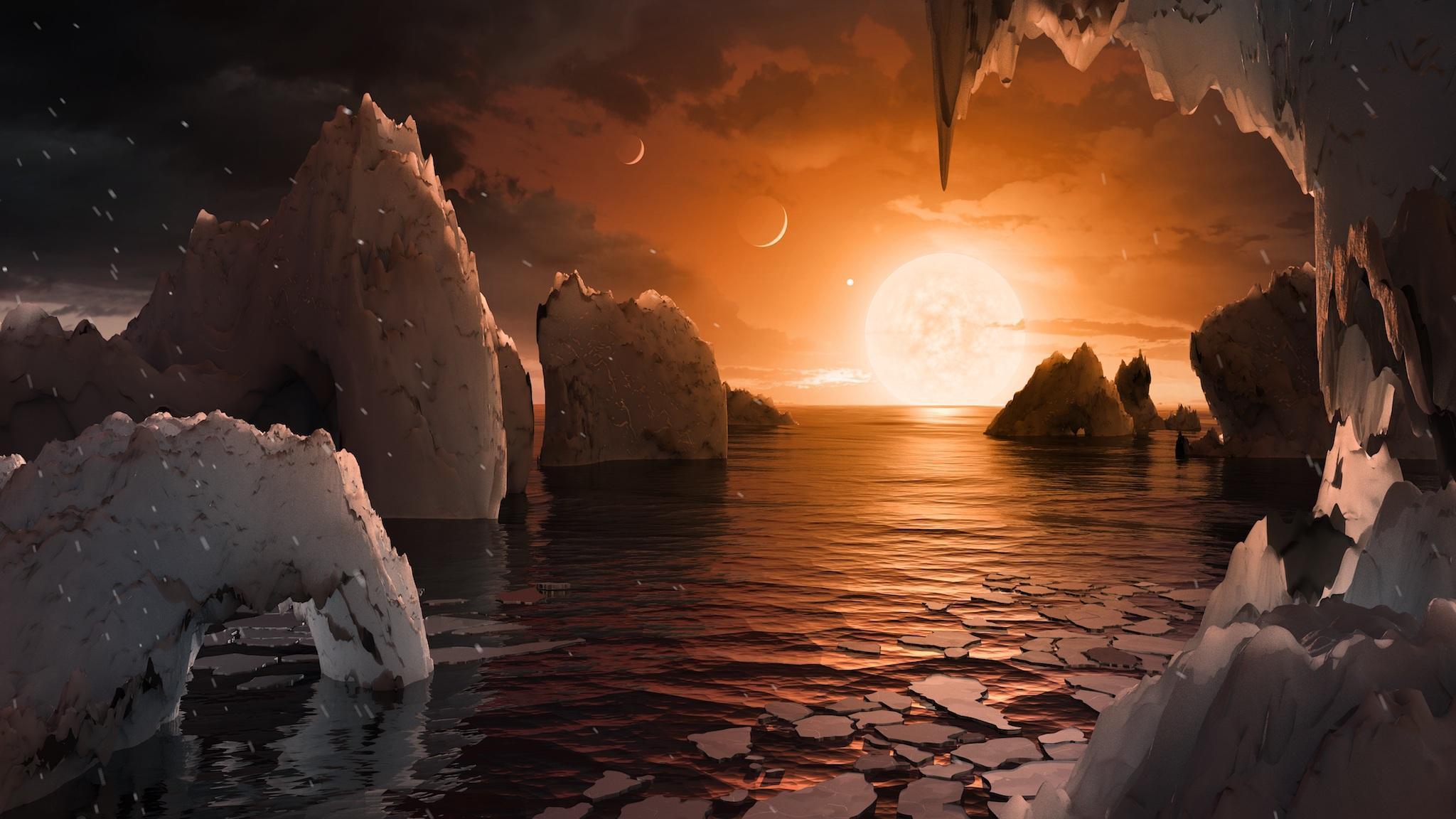Exoplanet Discovery: Nasa's simple explanation of 'holy grail' breakthrough
The experts were asked how they would announce the discovery of life – and whether they would announce it at all

Your support helps us to tell the story
From reproductive rights to climate change to Big Tech, The Independent is on the ground when the story is developing. Whether it's investigating the financials of Elon Musk's pro-Trump PAC or producing our latest documentary, 'The A Word', which shines a light on the American women fighting for reproductive rights, we know how important it is to parse out the facts from the messaging.
At such a critical moment in US history, we need reporters on the ground. Your donation allows us to keep sending journalists to speak to both sides of the story.
The Independent is trusted by Americans across the entire political spectrum. And unlike many other quality news outlets, we choose not to lock Americans out of our reporting and analysis with paywalls. We believe quality journalism should be available to everyone, paid for by those who can afford it.
Your support makes all the difference.Nasa just announced perhaps its biggest exoplanet discovery ever, commemorating it with a series of beautiful posters and a Google Doodle. But the first thing that some of the scientists did after revealing their find was to answer more questions – from the users of Reddit.
Many Nasa scientists and exoplanet experts launched a post on the forum where people could ask anything about the new discovery of planets around TRAPPIST-1. Much of the time was spent explaining the significance of the discovery – which saw scientists spot an entire solar system of Earth-like planets, many of which could support life.
The most popular question that the researchers were asked was: what next? Scientists have found out more than ever about the TRAPPIST-1 planets – but still much more remains entirely mysterious.
"NASA's Kepler/K2 is currently observing TRAPPIST-1!" wrote Natalie Batalha, who is a Kepler Project scientists at Nasa. "The spacecraft has been monitoring the brightness of the star since December 15, 2016 and will continue to do so until March 04, 2017. That's over 70 days of data. Scientists will be able to define the orbital period of the 7th planet.
"They may also be able to see a turnover (or reversal) in the transit timing variations which will allow scientists to refine the planet mass estimates. Perhaps we'll even find additional transiting planets. The raw data will be placed in the public archive immediately after the observing campaign finishes. It should be available to community by March 6th. This is one of the many ways that scientists will be studying the TRAPPIST-1 system."
The scientists were also asked what they'd actually do if they came across life on that or any other planet.
"I'm not aware of any formal protocols besides subjecting the research to peer review and the scrutiny of additional observations to confirm (or not)," wrote Natalie Batalha. "That said, I suspect that the evidence will emerge gradually as more data are collected and our understanding is deepened. To be certain that the atmospheric signatures we detect in the future are due to living organisms and not some other natural process (geology, etc...), we'll have to approach the problem from different angles and build up a comprehensive picture. This will take time. I don't envision it will be a sudden, eureka moment."
And they made clear that if they were to find life there'd be no question about making it public, despite some people's claims that it would be kept a secret – and that it might already have been found.
"It's part of our charter that NASA 'provide for the widest practicable and appropriate dissemination of information concerning its activities and the results thereof,' so, yes, we would inform the public," wrote Stephanie L Smith, who is the social media lead at Nasa's Jet Propulsion Laboratory.
And one Reddit user wanted to know what the point of finding life would be at all.
"Before benefiting from the direct material impact of finding Life elsewhere, such a finding could results in beneficial perspective change on Life as a whole, on our own habitat, its biosphere, and even on our species," wrote Julien de Wit, one of the paper's co-authors and an astronomer at MIT.
Join our commenting forum
Join thought-provoking conversations, follow other Independent readers and see their replies
Comments